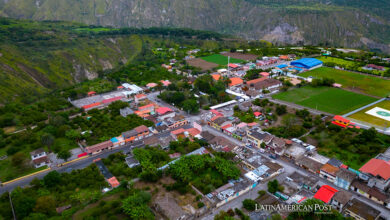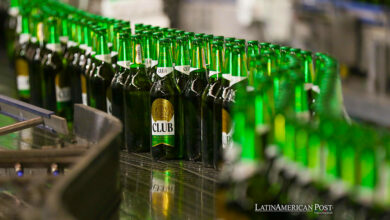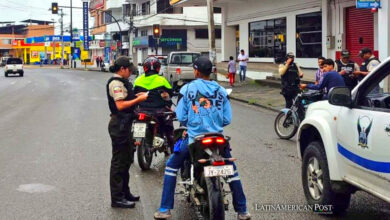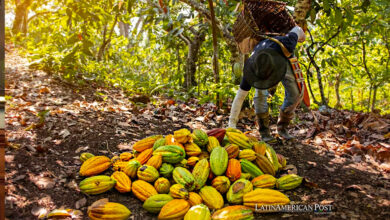Interview: “The glaciers need us and we need to reduce the ignorance that exists” founder of Cumbres Blancas
Marcela Fernandez, founder of Cumbres Blancas, spoke with LatinAmerican Post about her work to protect the remaining glaciers in our region
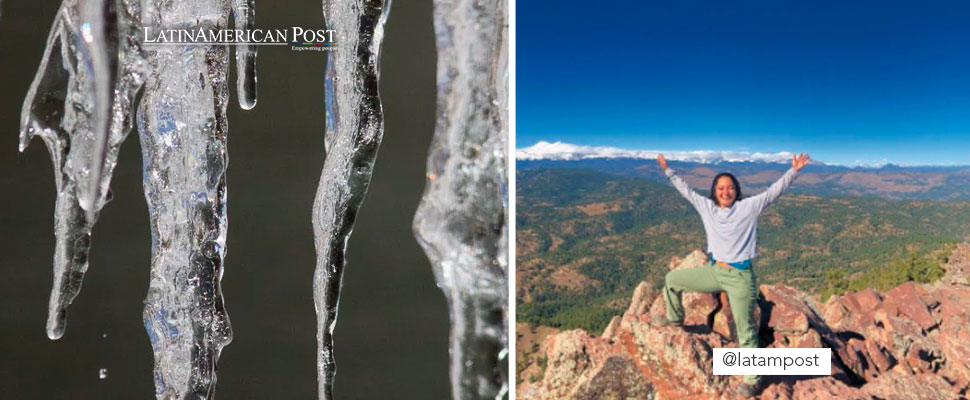
Photos: IG-marcelapulga
”
LatinAmerican Post | Vanesa López Romero
The melting of the glaciers is one of the most recognized consequences of climate change. But what few know is that in countries like Colombia, Mexico, Ecuador or Venezuela there are glaciers that are also suffering the effects of global warming. We were talking with Marcela Fernández, founder of the Cumbres Blancas project, about these white giants in Latin America, the danger they are in, the actions they are taking from the foundation and what we can do to contribute to the defense of equatorial and tropical glaciers.
LatinAmerican Post: Where does the Cumbres Blancas project come from?
Marcela Fernández: Cumbres Blancas arises from ignorance. Four years ago I read an interview with the Colombian glaciologist Jose Luis Ceballos, there they mentioned the existence of 6 glaciers in the country and I was surprised because I did not know that there were glaciers in Colombia, I did not know that there were 37 square kilometers of snow left and much less than a century ago glaciers had disappeared and that the ones that remain will die in 30 years.
This is how Cumbres Blancas was born, with those questions and with the purpose of having a book, a documentary and making scientific expeditions that would allow exploring and studying these terminally ill patients of climate change. We form a multidisciplinary team with mountaineers, photographers, documentalists, scientists and artists. From mountaineering as a sport, spirituality and science, this group of people joined us, we became a family in favor of this cause in Colombia and now also in other countries such as Ecuador, Mexico and Venezuela. The case of Venezuela is special, because it is the first country in the world to see all its glaciers disappear, it has less than half a kilometer of snow left.
LP.: Colombia is home to 2 of the 24 deforestation fronts in the world. How is the environmental impact of deforestation in our region related to the melting of glaciers?
Read also: Renewable Energies in The EU are key for the Russia-Ukraine conflict
MF: Glaciers must be seen as living beings and as an integrated ecosystem. The release of carbon, by fracking, deforestation, extensive livestock farming, monocultures, etc., causes a lot of carbon to be released into the atmosphere and the temperature increases, which causes the melting of glaciers to accelerate.
LP: How is the panorama of glacier melting in Latin America?
MF: Ecuador, Colombia, Mexico, Bolivia and Venezuela have Tropical glaciers. Those of Chile and Argentina are Andean glaciers. Tropicals are always between Cancer and Capricorn, which makes those from Colombia and Ecuador equatorial.
As a region we can unite in the good practices of conservation and protection of glaciers. Ecuador is a pioneer in the measurement of microplastics in glaciers, for example. Movements like Cumbres Blancas have managed to unite not only science, but also mountaineering, art and spirituality so that the glaciers have a voice that does not necessarily have to respond to science. These conversations can happen at the table, in congress, in companies. The glaciers need us and we need to reduce the ignorance that exists.
LP: In the case of Colombia, how has the State responded?
MF: A few years ago we managed to bring in Heïdi Sevestre, a well-known French glaciologist. This generated a media boom and we managed to bring the issue to a public hearing and to the Congress, which aroused the interest of many congressmen and an accidental commission for high mountains was created. Unfortunately, there was the matter. There is knowledge of this reality, but there are so many causes and realities that high mountains have not been prioritized. The budget for monitoring and study in our country, which is done by IDEAM, has not grown.
No measures have been taken showing that the country is more concerned about glaciers. Now we must have our eyes on the high Andean forest, on its restoration and recovery of fauna and flora, because it is the first high mountain ecosystem, the first to generate mist, through which snow is produced above 4,500 meters.
We are currently working on a second book. The first was in homage to the glaciers, the second will be in homage to the frailejones. We have more than 90 identified species, but many have not been photographed and are in remote parts of our country and we do not know their conservation status. With the book we seek to make them more recognised.
LP: Facing the elections, and in our daily lives, what can we as individuals do to protect the glaciers in our region?
MF: We must inform ourselves about the proposals of the candidates. See their depth, how much priority they have and how consistent they are. We must be active in informing ourselves about this.
Regarding individual actions, review what we do every day. That our shower is shorter, that what we wear is not fast fashion, how we separate our waste at home, make compost, have a garden, recycle, etc. It is to review our lifestyle. We must ask ourselves: what habit can we change so that our glaciers live longer? Each one has a calling, in this learning process each one can make the decisions that are aligned with the lifestyle. For me it’s the glaciers.

